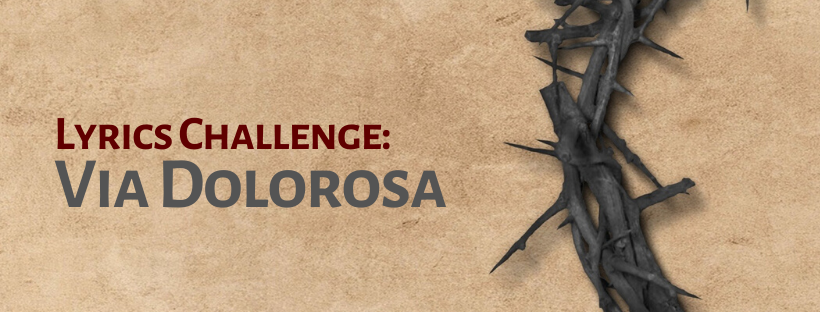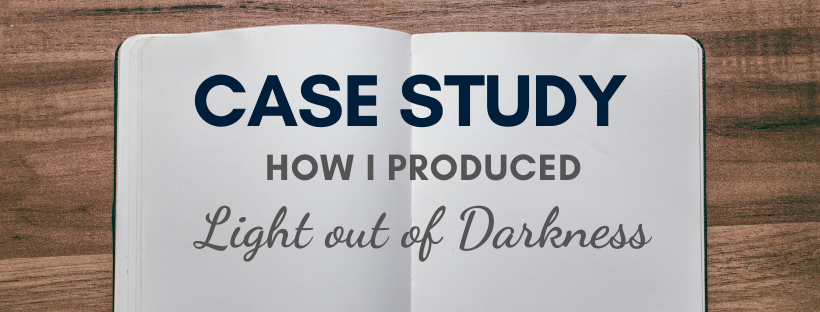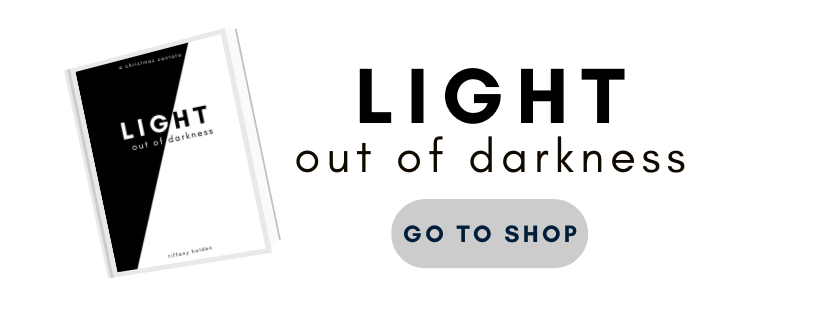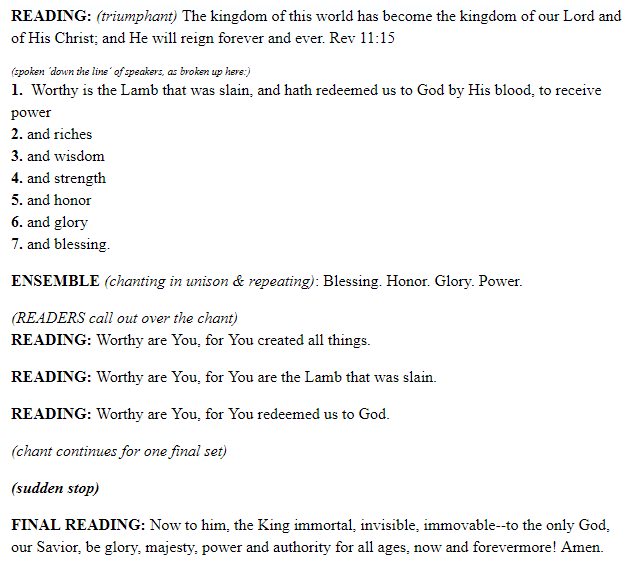You already know I enjoy rewriting song lyrics: sometimes tweaking them just a bit to better fit the context of my script, sometimes adding an entire verse to the song.
That is, until I sit down to do it.
Then I hate it.
And I hate myself, and nothing seems to fit, and I listen to the originals over and over again and wonder how in the world was the original lyricist able to create something so amazing?
So while I can sometimes work through this process, other times it helps to switch gears and do something else instead:
Thinking in pictures
What ‘picture’ is the original verse showing me? What is the scene? What is the setting, the main character?
Who or what is in focus? What is on the edge of the photo, or what is blurry?
I want to stay within the range of the original lens – that’s key for maintaining cohesion so that the new stanza fits into its surroundings.
But I don’t want to repeat the exact same content as the original material.
So I zoom in on another point in the same photo.
A related element, a fragment that is referenced in the original – taking that and expanding it somehow.
A couple months ago I was thinking over the weeks leading up to Easter and writing up music suggestions for my church.
I pulled up the classic 1989 song “Via Dolorosa” written by Billy Sprague and recorded by Sandi Patty.
This is a song I grew up listening to: it’s a few years older than I am and my mom has performed it at church in the past. As my voice matured it’s made an appearance in my solo performances (along with “Think of Me” from Phantom of the Opera)…in my car. Driving down the freeway. You know, the big stage.
It’s so passionate, it’s so heartfelt, and it tells the story of Jesus carrying His cross in a poignant and focused way. Unlike so many other songs that focus on doctrinal truth only, this one tells a story and invites us to that dusty street and a Nazarene stumbling under the weight of His cross.
But to me, there’s only one thing missing from this song: it’s not long enough. I love how the original track switched to Spanish after the first chorus, but I do wish it had another narrative section.
So, me being me…

The original song follows this structure:
- Verse 1
- Verse 2
- Chorus 1
- Verse 1 (Spanish)
- Verse 2 (Spanish)
- Bridge
- Chorus 2
Analysis: Looking at the picture
Here are the original opening lyrics that I’ll be creating a parallel to:
He was bleeding from a beating –
There were stripes upon His back
And He wore a crown upon his head
And He bore with every step
The scorn of those of those
Who cried out for his death
structure
The first three lines are descriptive of the physical reality of the moment – this is our setting. Jesus is in physical agony, He’s bleeding, He’s wounded, and He’s wearing a crown of thorns. All factual from Scripture.
The next three lines are descriptive of the spiritual reality of that moment – here the lyricist draws meaning from the picture and gives us a focal point. The blood, the scars, the crown, all are descriptive, but the writer is choosing to give more wordcount and thus greater wight to the rejection that our Lord was facing.
And if we look back to Verse 1, we see it’s purely descriptive – it’s opening the scene for us.
So there’s a progression:
- Verse 1 is setting
- Verse 2 is half and half: setting first and spiritual following
So the cultural framework of the song allows some flexibility for Verse 3: follow the pattern of Verse 2 or extend the progression further into the doctrinal weight of this snippet of the Good Friday story.
| Structure | |
| Verse 1 | Setting/storytelling |
| Verse 2 | Half setting, half spiritual |
| Verse 3 (our checklist) | Partial setting/storytelling, leans towards spiritual/doctrinal |
Themes
Both Verse 1 and Verse two reference weight/pressure: “the crowd pressed in to see” and “and he bore with every step / the scorn”. Neither verse references Jesus under the weight of His cross, and we know from John 19 that Jesus carried His cross and Matthew & Luke record that guards compelled Simon of Cyrene to carry it for him. Tradition assumes that the weight was too much for Jesus’ drained physical condition after the horror of a Roman flogging and he likely fell under His burden.
So we add to the list: reference weight, and refer to Him carrying His cross.
| Theme: weight | |
| Verse 1 | “Pressed in to see” |
| Verse 2 | “And He bore with every step / the scorn” |
| Verse 3 (our checklist) | Carrying the Cross |
Characters
We also see people referenced. In Verse 1 they’re just “a crowd”. In Verse 2 they’re “those who cried out for His death”. It’s getting closer, more personal.
Here is where I make a significant creative decision for this song. I’m exploring the theme of abandonment – the negative space of the characters who are missing.
Who else was involved in this scene? Or better yet, who wasn’t there? His disciples. In fact, Peter had betrayed Him three times the night before.
| Characters | |
| Verse 1 | Crowd |
| Verse 2 | “Those who cried out for His death” |
| Verse 3 (our checklist) | Missing: disciples |
Mapping it out
Organizing these notes into a matrix for the yet-unwritten Verse 3 might look something like this:
| Structure | Theme: weight | Characters | |
| Verse 1 | Setting/storytelling | “Pressed in to see” | Crowd |
| Verse 2 | Half setting, half spiritual | “And He bore with every step / the scorn” | “Those who cried out for His death” |
| Verse 3 (our checklist) | Partial setting/storytelling, leans towards spiritual/doctrinal | Carrying the cross | Missing: disciples |
So then it’s a matter of searching for a theme for the third verse, and I chose abandonment: suffering alone.
Looking ahead to the account of the Crucifixion itself, we see Jesus cry out “My God, why have You forsaken Me?”. The most personal relationship of all has been broken. Jesus carries the weight of His Father’s abandonment.
And here is a eureka moment as a flame of realization sears through the mind. (Best part of the creative process.)
Themes converge. The new grafts smoothly with the old. They’ve been constructed silently in parallel and now they collide into one.
The theme of burden/weight and the theme of abandonment. Jesus is carrying the weight of the cross (physical), the weight of God’s wrath (spiritual) all at the same time as He is also abandoned by His Father.
New Lyrics
Friends betrayed Him, and denied Him
He alone faced the mob
Even God, in His heaven, turned away
So Jesus bore alone his cross
And the weight of the Almighty’s holy wrath
Now, because I’m adding just one verse, if I was using the original performance track, I could replace either the first or second Spanish verse with my new one. But with live accompaniment, I could instead alter the structure to:
- Verse 1
- Verse 2
- Chorus 1
- Verse 3
- Bridge
- Chorus 2]
And if I wrote a 4th verse to truly parallel the original song’s structure, I could continue the progression and make the 4th one entirely about weight of sin.
All put together
Down the Via Dolorosa in Jerusalem that day
The soldiers tried to clear the narrow street
But the crowd pressed in to see
A man condemned to die on Calvary.
He was bleeding from a beating
– there were stripes upon His back
And He wore a crown of thorns upon his head
And He bore with every step
The scorn of those who cried out for his death.
Down the Via Dolorosa
Called the Way of Suffering
Like a lamb came the Messiah
Christ the King
But He chose to walk that road
Out of His love for you and me
Down the Via Dolorosa
All the way to Calvary.
Friends betrayed Him, and denied Him
He alone faced the mob
Even God, in His heaven, turned away
So Jesus bore alone his cross
And the weight of the Almighty’s holy wrath
Down the Via Dolorosa
Called the Way of Suffering
Like a lamb came the Messiah
Christ the King
But He chose to walk that road
Out of His love for you and me
Down the Via Dolorosa
All the way to Calvary.
Have you ever rewritten song lyrics? What’s your process? What works and what doesn’t? I’d love to hear! Let me know at designorganizecreate@gmail.com








